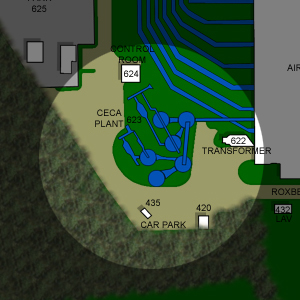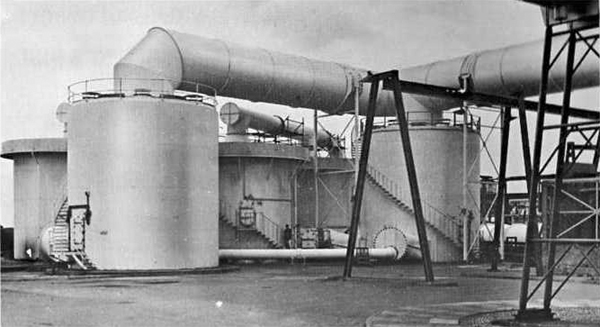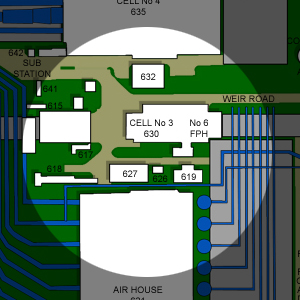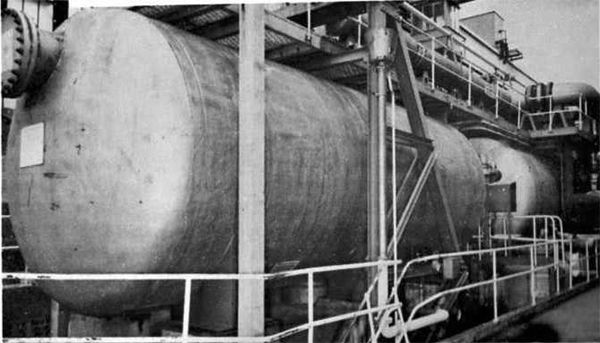 |
History
home | history | then and now | air drying plant
Ceca Plant (623): Then And Now
 |
The Ceca Plant (so called because it was manufactured by the British Ceca Company Limited)
dried the compressed air flow being sent to all the major test cells in the western corner of Pyestock. Given the
speed, and amount, of air being forced through the plant, it needed to be of considerable size.
It comprised of several large tanks containing 162 tonnes of silica gel.
|
Both the original photographer and I selected the same view of the Ceca Plant.
However, this isnít surprising as most of the other approaches to the plant are obscured by the suction mains or
blocked by a transformer park.
Note there's a tiny figure climbing the circular stairwell in the first photograph which is a good indication of scale.

|
|
The Ceca dry air plant.
|

|
The Ceca dry air plant.
31|03|07 © Simon Cornwell 2007
|
Birlec Plant: Then And Now
 |
The output of the Ceca plant wasnít sufficient for tests in
Cell 3, so additional plant was installed along one of the narrow
passageways between the cell and the Air House. The Birlec Plant
(so called because it was manufactured by Birlec Limited) boosted the output of the
Ceca plant, providing tanks holding another 42 tonnes of silica gel.
|
Finding a good angle to photograph the Birlec Plant was a problem for the original photographer, who managed to
capture both tanks, nestled in amongst the pipes and walkways along Cell 3, at only an
acute, sideways angle.
The plant itself was so unassuming that I didnít even remember seeing it during my trips to Pyestock. However,
when reviewing my pictures of Cell 3, I discovered Iíd managed to capture part of
it in this rejected, out-of-focus shot.

|
|
General view of Birlec dry air plant.
|

|
The Birlec dry air plant in context.
03|03|07 © Simon Cornwell 2007
|
|


